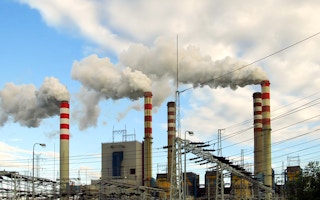Voluntary buyers around the world paid to offset the equivalent of 84.1 million (M) tonnes of carbon dioxide in 2015, a 10 per cent increase from 2014, led by private-sector companies taking proactive steps to reduce emissions ahead of regulation, according to a new report from Forest Trends’ Ecosystem Marketplace (EM).
The EM report, Raising Ambition: State of the Voluntary Carbon Markets 2016, shows that while the world’s nations prepared for the historic Paris Agreement on climate change last year, individuals, corporations, and state and national governments used voluntary carbon markets to ramp up their own climate action.
The new report is being launched at the Carbon Expo 2016 in Cologne, and its release comes as the first round of climate talks to iron out the details of the landmark Paris Agreement wraps up in Bonn, Germany. Other key findings include:
- Despite the 10 per cent increase in volume transacted, the average price of carbon offsets fell 14 per cent to an all-time low of US$3.3 per tonne, driving the overall value of the voluntary market down to US$278 M.
- Offsets from wind energy surpassed those tied to avoided deforestation (REDD+) as the most sought-after project type in 2015. Transactions of wind offsets reached 12.7 million tonnes of carbon dioxide equivalent (MtCO2e) at an average price of $1.9/tonne. But due to their higher average prices, REDD+ offsets accounted for a higher total value than wind, at US$37.5 M.
- Alongside California’s growing compliance carbon market voluntary buyers in the United States purchased the most offsets of any country in 2015 – 16 MtCO2e, nearly equal to the combined voluntary demand of all European countries. Most of this demand (15.5 MtCO2e) stayed within the United States.
- Among offset buyers, the events/entertainment and service sectors rose to the top of the list in 2015. Energy, transportation, and finance/insurance companies remained significant players. Overall, 98 per cent of offsets went to private-sector buyers in 2015.
- Third-party verification is king: 98 per cent of transacted tonnes were verified by an independent thirdparty standard.
- Despite a record 39.5 M tonnes being retired by voluntary end-users in 2015 – permanently removing these offsets (and the emissions they represent) from circulation – new issuances continue to outpace retirements, and it is a buyers’ market.
“
This is a time of flux for voluntary carbon finance – an interim period as companies and governments segue from their early pursuit of carbon neutrality to even more ambitious post-Paris climate action.
Kelley Hamrick, senior associate, Ecosystem Marketplace
Looking ahead, there are a number of promising opportunities to shore up demand for voluntary carbon offsets or, alternatively, to transition them to budding compliance markets. For example, the International Civil Aviation Organisation (ICAO) – the UN body that governs the sector – has set a goal of achieving “carbon-neutral growth from 2020,” positioning airlines to become major offset buyers as they look to bridge the gap between achievable emissions reductions and their ambitious targets.
Voluntary suppliers are also looking towards private-sector companies setting new “Science-Based Targets” and those joining the World Bank’s Carbon Pricing Leadership Coalition, officially launched in Paris, as a potential source of future offset demand. Major events such as the World Cup, the Olympics, and the Superbowl have each gone carbon-neutral, putting individual, high-profile events at the forefront of voluntary carbon finance.
“This is a time of flux for voluntary carbon finance – an interim period as companies and governments segue from their early pursuit of carbon neutrality to even more ambitious post-Paris climate action,” said report author and EM Senior Associate Kelley Hamrick. “There are many opportunities and potential new avenues for demand, but we have to wait and see if they materialise.”
“Paris reframed our ideas about shared responsibility for addressing climate change by saying everyone needs to play a part in solving this crisis,” said Forest Trends Founding President and CEO Michael Jenkins.
“Now armed with a mandate from the world’s governments and biggest businesses, we’re in a unique position to go above and beyond what’s presently required – bending the curve toward achieving what’s truly needed to avoid climate catastrophe. Voluntary offsetting is one promising solution to help bridge that gap,” Jenkins added.










